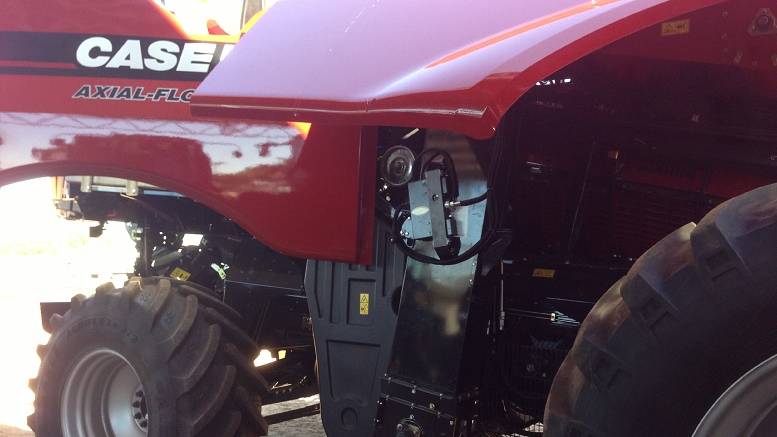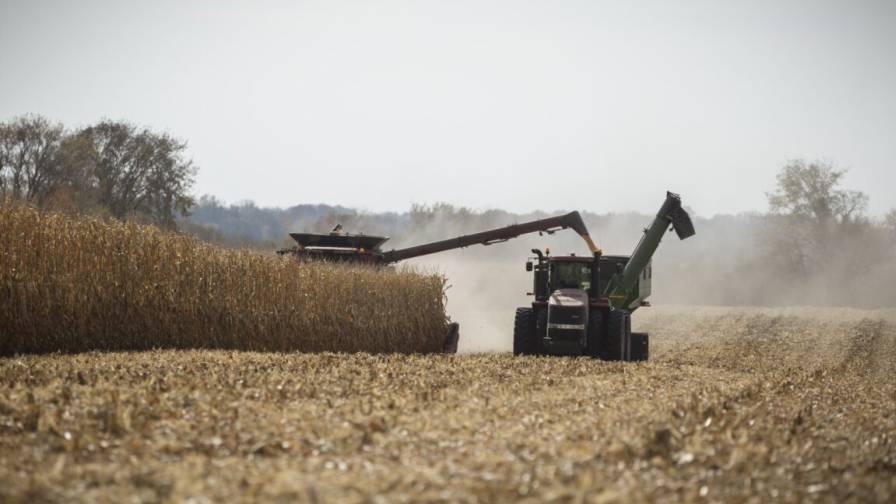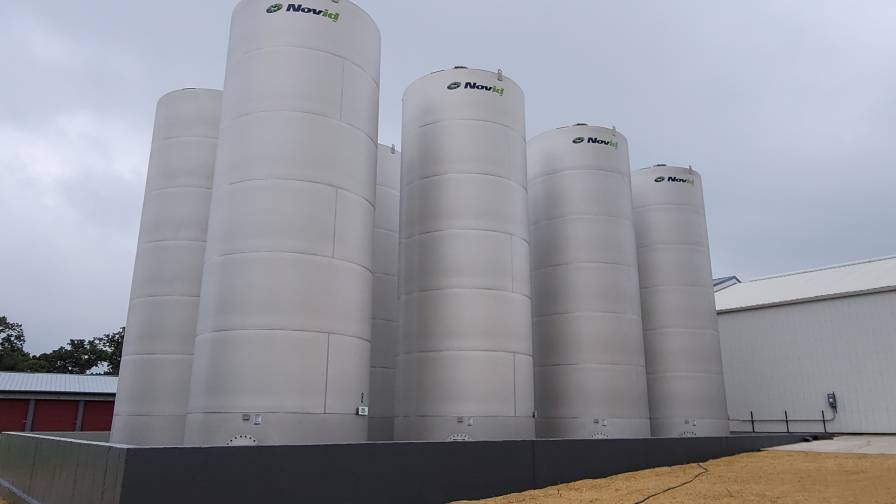Tanks and Containment: Manufacturers Finding Growth Opportunities in Ag Retail Market
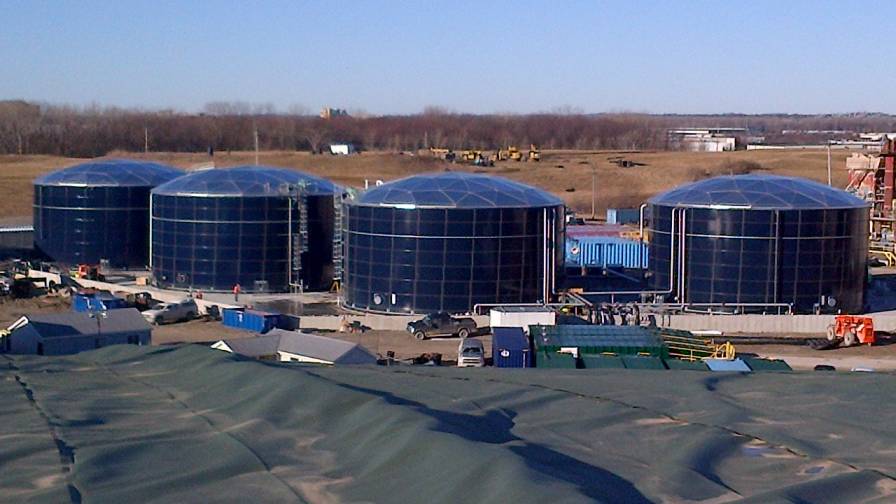
Manufacturers of tanks and containment systems express optimism as they look to 2022 and beyond. Photo courtesy of Cady Aquastore.
The COVID-19 pandemic disrupted many areas of the economy, but it seems agriculture in general and the tanks and containment segment survived relatively unscathed.
A Look at 2021
“Most facilities and companies have continued on with their capital expansion and replacement plans after pausing in the middle of 2020. Demand in the market has been robust,” says Ryan Plett, President, Novid.
And while there might have been some initial slowdown, whatever prompted those delays seem to have dissipated.
“We are not seeing as many tanks built this year as compared to previous years; people’s interest in containment has seemed to increase,” says Dale Pedersen, Sales Manager, Agraliners LLC.
J.C. Ramsdell Enviro Services Inc. hasn’t seen any effect on its sales.
“Coming out of pandemic of late 2019 and 2020, which were great years for us, 2021 confirms that the industries we serve are having continued growth as well as routine needs for planned maintenance and repairs,” says Todd Kringen, Sales Representative.
Much of that increase might be supported by the higher prices growers are getting for their crops.
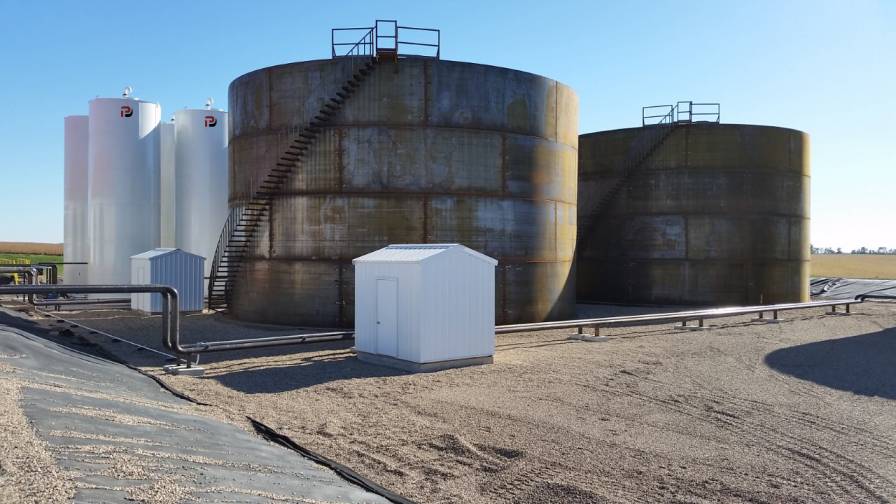
An upward trend for retail facility expansion has benefitted manufacturers of tanks and containment systems. Photo courtesy of Precision Tank
“The market for UAN (urea, ammonia, nitrogen) storage will continue to grow at the retail as well as the on-farm level. With strong commodity prices for the near future the potential for additional storage exists” says Steve Willey, Nutristore Sales Representative. Nutristore is the liquid fertilizer tank brand sold by Cady Aquastore Inc.
“A major influence on this years’ and into 2022 is the large increase in fertilizer prices and the need to have product on hand. Buyers will want to purchase at best possible price to have product readily available,” Willey continues.
Those strong commodity prices have had an indirect impact on Precision Tank’s operations.
“Reduced competition in the corn market from Brazil, Argentina, and the Ukraine and China’s increased corn imports have kept corn prices up which pumps additional money into the U.S. agricultural market and has fueled sales across all product lines,” says Gary Ruff, Regional Sales Manager, Precision Tank. “When producers have additional money, it trickles throughout agriculture.”
That’s not to say that the industry hasn’t been completely unaffected by the challenges COVID presented.
“This year has seen repeated dramatic price increases in the global supply chain as well as strains on shipping networks.” Novid’s Plett says. “All of this has driven up consumer pricing in nearly every industry after decades of minimal inflation. At times it has felt a test of what the market will bear as part of a huge overcorrection, often driven by outside factors not directly related to input costs. Common sense suggests these increases will come back down but it hasn’t happened yet.”
Those rising costs could lead to challenges.
“The cost of materials skyrocketing and the legitimate fears of inflation,” Agraliners’ Pedersen says. “People are only building new tanks if they must have the additional capacity.”
For that reason, Agraliners’ management team is looking at ways of expanding the company’s offerings. “Increasing our business even more any way we can to grow even more. For us it is developing additional markets and opportunities in what we can offer a customer.”
“One thing the company has done is add additional types of liners for products other than fertilizer. In addition, the management team is working with multiple states and their departments of agriculture on their requirements for containment.”
Looking Ahead
With a relatively decent 2021, manufacturers share a positive outlook heading into the next several years.
“Novid has been heavily investing our production infrastructure and processes with the goal increasing capacity by 50% beyond our previous maximums,” Plett says. “Our expectation is the demand in the market will continue to grow with our company.”
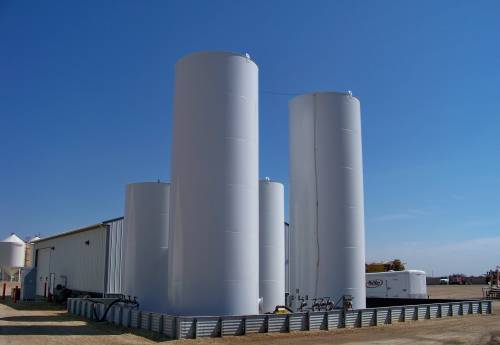
Manufacturers are seeing a trend toward larger expansion projects at ag retail facilities. Photo: NuWay-K&H Cooperative. Photo courtesy of J.C. Ramsdell.
J.C. Ramsdell’s Kringen echoes that sentiment.
“Project sizes are continuing to get larger, and I see no shortfall in that trend,” Kringen says. “As in past years many containment systems are at or near life expectancy and the industries we serve are setting aside capital for improvements or replacement.”
There are other reasons to be hopeful:
“Many of the tanks at existing facilities across North America are at or beyond the end of their lifespan and need replacement before they fail,” Novid’s Plett says. “This presents a massive opportunity for Novid and is one of the main drivers behind expanding our production and shipping capacity.”
“The market for UAN storage should remain strong in 2022,” Nutristore’s Willey says. “Many locations need new or additional storage. Product price and cost of tank construction will remain as determining factors in these decisions. Transportation issues for timely delivery of product have become a major factor and additional storage can help alleviate these problems.”
“I have noticed several field erected tanks (FET’s) that are being abandoned and/or disassembled due to failed structural testing,” J.C. Ramsdell’s Kringen says. “Those occurrences are further driving consolidation of operations – erecting new tanks in centralized locations is common course when replacing FET’s. Constructing internally lined FET vs. using traditional structural containment for FET’s can be debatable both ways. At J.C. Ramsdell we highlight the benefits that traditional containment brings when protecting your environment from catastrophic tank failure. Almost all large operational facilities are still making room for smaller tank containment systems to help capture specialty or customizable starter fertilizers markets. Those smaller tank sites are still using traditional constructed secondary containment.”
Challenges
As unaffected as the industry has been, there are still some reasons for caution.
“Higher interest rates on borrowed money, inflation, cost of materials, and labor,” Agraliners’ Pedersen says.
Nutristore’s Willey shares that concern.
“Steel prices are the elephant in the room as of now,” he says. “Another challenge in the industry is the production of sufficient quantities of steel to need needs in the future.”
Material availability remains a concern, and that’s not the only issue, says Precision Tank’s Ruff.
“Finding and hiring skilled workers is an issue across many industries, this along with limited availability of stainless steel and the raw materials for fiberglass tanks has increased production lead times,” Ruff says. “Delivering product to the end user in a timely fashion will include managing their expectations.”
Of course, not every challenge is tied to the pandemic.
“Attention to detail of on-hand inventory of construction materials will suggest looking over the horizon to anticipate long-term trends and project needs,” Kringen says.
Opportunities
If customers aren’t looking to install new tanks, they must keep their existing facilities up to date.
“Maintenance on existing tanks to keep them in service longer,” Agraliners’ Pedersen says, is an opportunity for manufacturers.
“I anticipate that more bulk storage will be added to help alleviate supply shortages that occurred with packaged CPP (crop protection products) goods in 2021,” J.C. Ramsdell’s Kringen says.
When they do look to upgrade their facilities, many customers are looking at tanks that hold more material.
“UAN and ATS tanks are getting larger and will continue to do so. The safety issues with NH3 will lead to more UAN usage,” says Randy Cady, President, Cady Aquastore.
The ongoing consolidation could have an impact as well.
“As dealers consolidate and acquire smaller operations the trend is to move assets and centralize into more efficient configurations to better supply customers; in many cases this involves additional tank and containment,” Precision Tank’s Ruff says.
Trends
According to Agraliner’s Pedersen, “Several of the family-owned businesses are starting to look more and more at selling out. Regulations in some states are also starting to increase.”
And as products evolve, so must the tanks that hold them, which creates opportunities for many manufacturers.
“We are seeing heavier weights of UAN mixes, so have increased specifications of the Nutristore,” Cady says. “Also, a proprietary bonding treatment internally increases the already proven leak tightness of the Nutristore. As for sparger updates, the Nutristore spargers are now more located to the center of the tank vs. simply along the sidewall.
Lastly, Edgecoat III was introduced in late 2020, thus Nutristore sidewall panels are completely “enveloped” by the baked-on porcelain glass coating, reinforcing the “never sandblast, never repaint advantages of Nutristore.
“Awareness that the life of a typical steel welded floor, is experiencing a shorter life span and leads to more interest in a site-specific tank foundation design,” Cady says. “By elevating the floor up above grade, allows water off the tank roof to flow away from the tank, rather than be caught by a grade band, and collected under the tank.”


